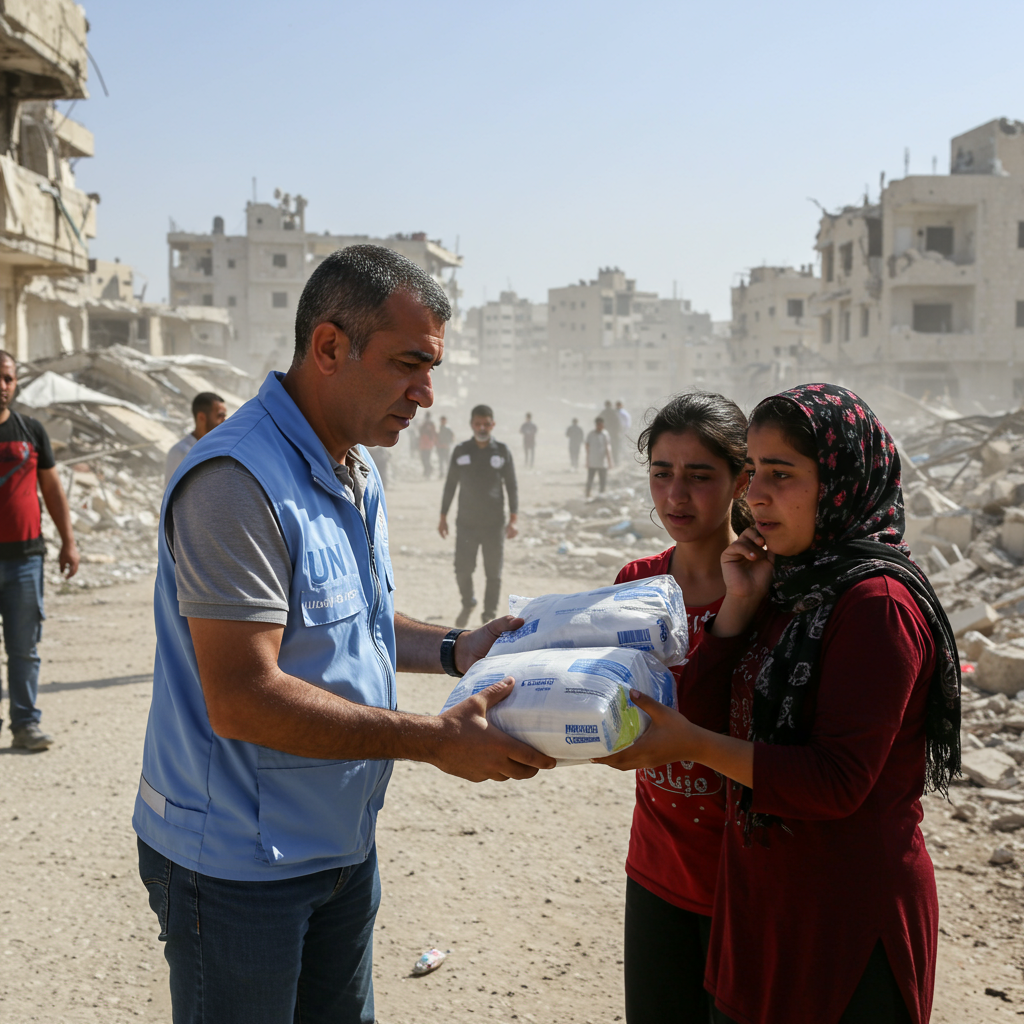Recent US military strikes targeting Iran’s nuclear program have forced Tehran’s leaders into a critical strategic calibration. Their ultimate response hinges on a central objective: preserving the Islamic Republic and ensuring its long-term survival. This core directive shapes how Iranian leaders, particularly Supreme Leader Ali Khamenei, perceive their current predicament and dictates their tolerance for risk. Understanding these factors is key to anticipating Tehran’s next steps.
Understanding the US Strikes
On June 21, the United States launched significant strikes against three key Iranian nuclear facilities: the primary enrichment sites at Natanz and Fordow, and a third location storing processed uranium near Isfahan. Dubbed “Operation Midnight Hammer,” these attacks utilized powerful Massive Ordnance Penetrator “bunker buster” bombs against deep underground targets like Natanz and Fordow, alongside Tomahawk cruise missiles striking Isfahan.
The US strikes were part of a sustained, coordinated campaign that included prior Israeli operations. Israel had already been targeting Iran’s nuclear program, military sites, energy infrastructure, and leadership since June 13, resulting in significant casualties and disruption. While Iran appears to have relocated some material beforehand, the combined US and Israeli efforts dealt a severe blow, likely destroying a considerable portion of enriched uranium and centrifuge cascades. Some assessments suggest these strikes represent the most serious challenge to the Islamic Republic since the Iran-Iraq War in the 1980s.
Following the US action, senior Iranian officials swiftly vowed retaliation, with some reports indicating an attack on US forces in the Middle East could be imminent or even just hours away.
Iran’s Core Dilemma: Survival First
Iran faces limited options. One path involves making concessions on its nuclear program, missile capabilities, and regional activities, as demanded by the United States. However, Supreme Leader Khamenei would likely view such steps as equivalent to surrender, further weakening his regime. Khamenei has historically relied on the nuclear program, missile arsenal, and the network of proxy and partner forces known as the “Axis of Resistance” as essential tools for projecting power and deterring adversaries. Compromising on these foundational elements would substantially erode Iran’s military strength, a move Khamenei is particularly unlikely to make while facing simultaneous US and Israeli pressure.
While some voices within Iran might favor compromise, given the apparent failure of these assets to fully deter attacks, Khamenei has shown no indication of considering this. Instead, his primary calculation appears centered on the belief that continued resistance and confrontation remain the best strategy for regime survival.
Iran’s Resistance Calculus
Assuming Khamenei maintains his historical preference for resistance, several critical factors will influence his decision-making:
Avoiding Uncontrolled Escalation: Iran seeks to re-establish deterrence against the US and Israel but must do so without provoking a disproportionately stronger response. Balancing sufficient force for deterrence with the critical need to avoid a wider conflict is a difficult tightrope walk.
Disruption to Military Command: Israeli strikes have targeted and killed senior Iranian military officers, disrupting the chain of command and potentially leading to friction between new commanders and Khamenei.
Precarious Domestic Situation: The regime faces mounting domestic instability, exacerbated by attacks on infrastructure and surveillance sites, which have impacted the economy and weakened Tehran’s ability to control its population.
Overall Degradation of Capabilities: Over the past 19 months, Israel’s actions have significantly degraded key Iranian power levers. The Axis of Resistance, particularly Hezbollah and the Houthis, has been weakened by conflict, and Iranian air defenses and missile capabilities have suffered, increasing Iran’s vulnerability to conventional strikes.
Despite these challenges, Khamenei must decide how to retaliate and how much risk of further escalation he is willing to accept.
Potential Retaliation Options
If Iran chooses the path of resistance, it has four primary means of retaliation:
- Missile and Drone Strikes: Launching a volley of missiles and drones at US forces stationed across the Middle East, such as those in Iraq or on the Arabian Peninsula. While Iranian missile forces may be degraded, they retain the capacity for a significant attack. Recent reports confirmed Iran’s Islamic Revolutionary Guard Corps (IRGC) launched “Annunciation of Victory” missile attacks on June 23, targeting the large Al Udeid Air Base in Qatar and the Ain al-Assad base in western Iraq, which house US troops. Qatar confirmed the Al Udeid attack, noting the base had been evacuated, preventing casualties, and condemned the strike as a violation of sovereignty.
- Militia Attacks: Directing proxy and partner forces, such as Iraqi militias or the Houthis, to attack US bases in Iraq and Syria or naval assets in strategic waterways like the Red Sea and Gulf of Aden. These groups have been equipped with advanced strike capabilities by Iran. It is suggested that the attack on Ain al-Assad may have been carried out by militias rather than directly claimed by Iran. While risky, using proxies allows Iran a degree of plausible deniability and could serve as “warning shots” targeting US public opinion, though the US has explicitly warned against this.
- Naval Aggression: Utilizing naval assets and coastal defense systems to threaten international shipping, potentially focusing on disrupting traffic through the vital Strait of Hormuz. While Iran’s parliament has reportedly approved its closure, the final decision rests with the Supreme National Security Council. Such a move would severely harm Iran’s own economy, which relies on the Strait for oil exports.
- Terror Operations: Activating covert cells abroad, including in Western countries or potentially the United States, to conduct terrorist attacks. Iran and its allies like Hezbollah possess established networks capable of such actions. Reports have even suggested Iran threatened to activate sleeper cells on US soil via an intermediary, a message that reportedly factored into the US decision to strike.
Assessing the Risk
Any attack against US interests or personnel carries a significant risk of further escalation, regardless of its scale. Khamenei can attempt to mitigate this risk by opting for a more limited attack. Alternatively, he could decide to inflict a high cost on the United States, which would entail a very high risk of a stronger US counter-response. Regardless of the chosen method, any attack on US assets involves accepting the potential for serious US casualties, an outcome Washington deems unacceptable. Regional alerts have been heightened, and neighboring countries temporarily closed airspace following recent Iranian strikes.
The Most Likely Path Forward
Based on current assessments, the most probable Iranian response appears to be a tempered missile or militia attack specifically targeting US forces within the Middle East. However, the most dangerous potential response would involve a combination of the options described above, aimed at imposing maximum cost on the United States.
While diplomacy remains a theoretical off-ramp, particularly if the US were to pressure Israel to halt its campaign, Iran’s stance against negotiating under fire makes this unlikely in the short term. Furthermore, despite significant US-Israeli coordination on military strategy and damage assessment, the recent unilateral nature of some Israeli actions has reportedly strained aspects of the relationship.
The future trajectory of this conflict depends heavily on the scale and frequency of continued strikes against Iran, the nature of Iran’s retaliatory actions, the degree of direct US involvement (or lack thereof), and how regional actors and global markets respond. The most critical immediate concern remains locating and securing Iran’s stockpile of 60% enriched uranium, which poses a significant proliferation risk.
Regardless of which path Khamenei ultimately chooses, the United States and its partners must remain highly vigilant, prepared to defend their interests and personnel while implementing appropriate measures to deter further Iranian attacks.



